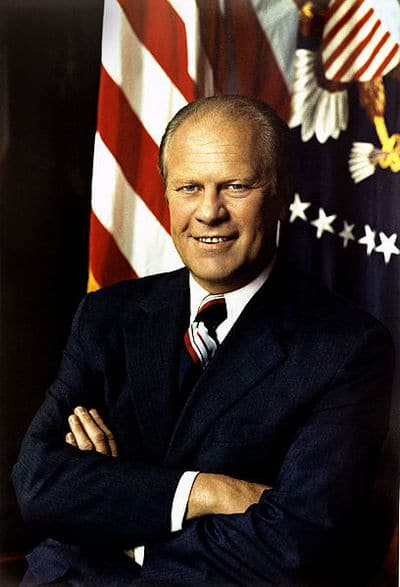Richard Nixon’s presidency and legacy are marked by a single event and its fallout between 1972 and 1974. He would eventually resign over accusations surrounding the Watergate scandal.
What is the Watergate scandal?
The Watergate scandal is the circumstances surrounding a break-in at the Democratic Conventional Headquarters under the orders of members of the Republican Party and the cover-up that ensued.

Table of Contents
ToggleThe Legacy of Watergate
President Richard Nixon went from denying a connection to the burglars to being heard on tape arranging a cover-up of the operation. He would later resign to avoid impeachment or even criminal charges for obstruction of justice.
The term Watergate is now tied to political corruption and controversy nearly 40 years after the event.
What happened at Watergate?
How deep was the president’s involvement in Watergate?
What Happened at Watergate?
The central part of the Watergate scandal was a break-in at the offices of the Democratic National Committee within the Watergate complex in Washington DC.
While the men involved were labeled as burglars after breaking and entering the offices, there was far more to the story.
They were there to steal documents and to bug the phones of the Democratic Party under the orders of the Committee to Re-elect the President.

Why did Watergate even happen?
The Republicans and the Democrats were involved in a bitter election campaign where President Nixon sought a second term amid the ongoing Vietnam War. President Nixon was not confident that he would win the second term so decided to take drastic action.
Nixon’s team decided that it would be beneficial to gain information about the Democratic campaign through espionage.
Ultimately, they tried to break in 3 terms.
The first time they were unable.
The second time, their plans went wrong.
The third time, they were caught by the police and arrested.
The third time, five men returned to the Watergate Office Building on June 17th to fix failed wiretaps. This time, those breaking into the complex included E Howard Hunt, G Gordon Liddy, and James McCord.
Uncovering the Cover-Up Created by Nixon and the Republicans
Evidence grew about a connection between the break-in and the re-election campaign. It also seemed that funds linked to the campaign had paid those involved.
The real question was how far up in the White House the orders were given.
The only thing that the Republicans could do at this point was cover up the affair and insist that they had no involvement whatsoever.

Men such as White House Counsel John Dean had initially done enough to shift the blame and keep the public on the Nixon administration’s side.
In November of that year, Nixon was re-elected with ease and started his second term the following January. None of Nixon’s tricks weren’t even needed for his re-election campaign.
A Doomed Second Term
The situation began sour early in President Nixon’s second term as some conspirators were indicted and pled guilty to avoid a trial.
The issue for Nixon refused to go away as those skeptical of his alleged lack of involvement dug deeper, particularly reporters from the Washington Post.
The Nixon White House would face questions throughout the year, leading to the famous speech where he declared, “I am not a crook.”
This line would come back to haunt him when all was later revealed.

Nixon knew much about what was happening and had even arranged to pay off the burglars to keep them quiet. On top of this, there was a plan to get the CIA involved in halting the FBI investigation.
As more conspirators gave up key information, it was harder and harder for Nixon to avoid being indicted himself.
Former White House counsel Charles Colson, former assistant to Nixon John Ehrlichman, White House Chief of Staff HR Haldeman, and former United States Attorney General John Mitchell were all later indicted following an investigation by Special Prosecutor Archibald Cox.
The Influence of Deep Throat
Bob Woodward and Carl Bernstein uncovered a lot of what was really going on while working for the Washington Post. They were helped by an informant that went by the name Deep Throat.
At the time, Deep Throat was an anonymous whistleblower that helped direct the two reporters toward the truth behind the cover-up and intentions of the break-in.
Deep Throat was later revealed to be the former associate director of the FBI, W. Mark Felt.

The Smoking Gun Tape
The biggest blow came when it was revealed by deputy assistant to President Richard M Nixon, Alexander Butterfield, in June 1973 that all conversations in the Oval Office were taped and that there would be a tape available with evidence of the cover-up.
While there were attempts to use presidential privilege to keep the tapes classified, this failed, and eventually, the Nixon administration was compelled to hand them over.
This led to the revelation of the Smoking Gun Tape, where Nixon was heard talking about the cover-up.
Richard Nixon’s Resignation and Pardon
The release of the Smoking Gun Tape was the beginning of the end of Nixon’s time as President of the United States. The evidence against him was now clear, and Congress had a strong case for impeachment.
There was strong support for impeachment from both political parties because President Nixon had obstructed justice. Nixon was informed of this change in circumstances at the Oval Office on August 7th and advised to resign.

The following evening, he read a speech to the public via a national broadcast that announced his plan to leave office. He expressed his regrets about having to do so. He also said that Vice President Ford would be taking over.
There was no admission of guilt.
The next day, Nixon signed his resignation letter and boarded a helicopter to leave Washington. Gerald Ford assumed the role of president after that.
At this point, Nixon still faced the possibility of a trial and criminal conviction. However, on September 8th, Ford chose to issue a presidential pardon to Nixon for anything he may have been involved in.
Ford saw his pardon as a way to draw a line under the affair and leave the former president in peace. There were rumors that Nixon had agreed to resign on the condition that this pardon would happen. This has been denied by the Whitehouse.

He presided over the court cases of those arrested for breaking into the Watergate Complex.
The Legacy of the Watergate Scandal
Although Nixon maintained that he was innocent right until his death, the Smoking Gun Tape suggests otherwise.
The Watergate scandal was swept under the rug after 1974 but has never been forgotten and will go down as one of the biggest White House scandals to ever occur.
We only have to look at how we talk about subsequent scandals to see the effect. Whenever a situation has the suffix gate attached to it, it is a nod to the Watergate affair.

Get Smarter on US News, History, and the Constitution
Join the thousands of fellow patriots who rely on our 5-minute newsletter to stay informed on the key events and trends that shaped our nation’s past and continue to shape its present.
How useful was this post?
Click on a star to rate it!
Average rating / 5. Vote count:
No votes so far! Be the first to rate this post.
We are sorry that this post was not useful for you!
Let us improve this post!
Tell us how we can improve this post?







